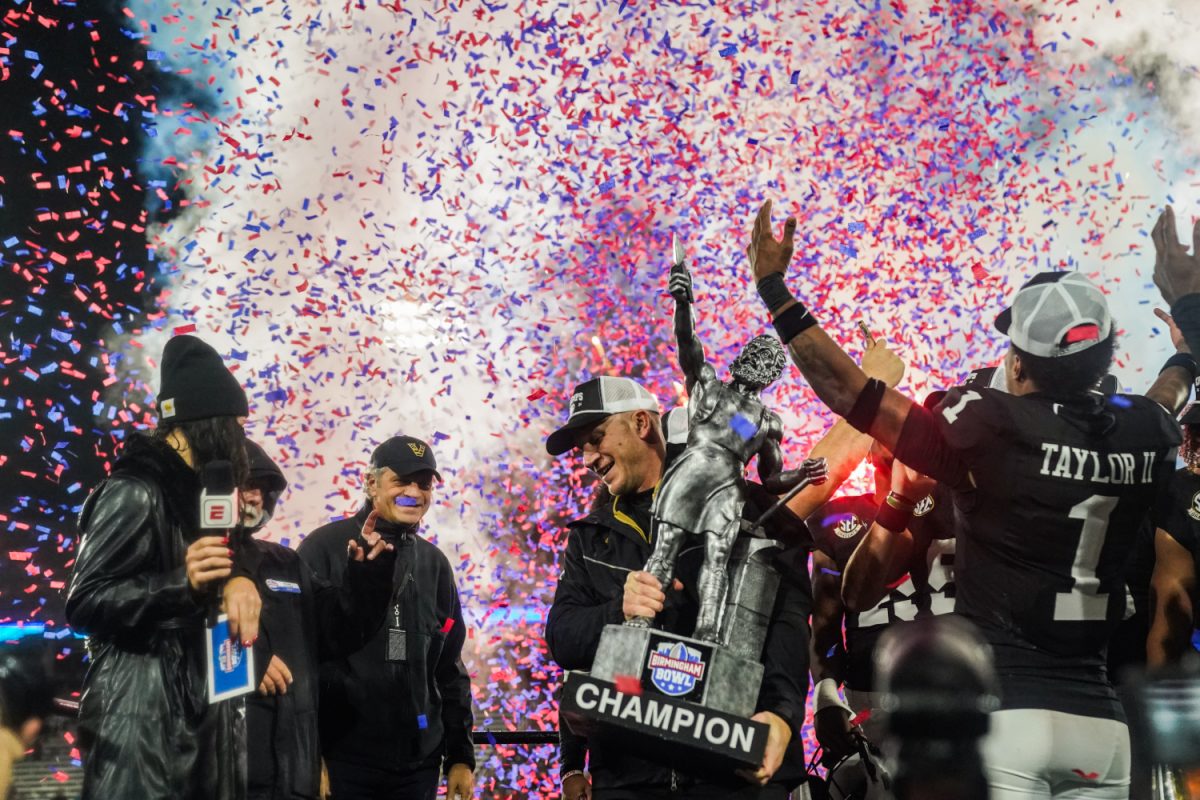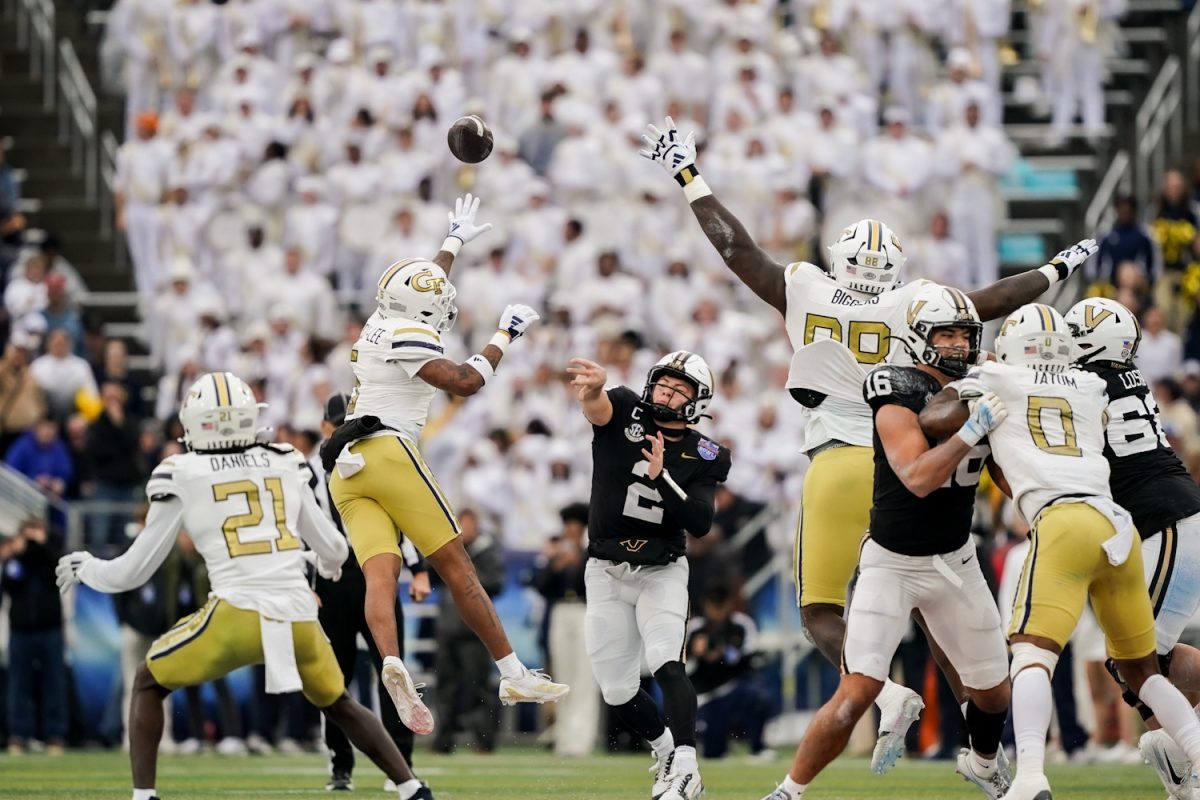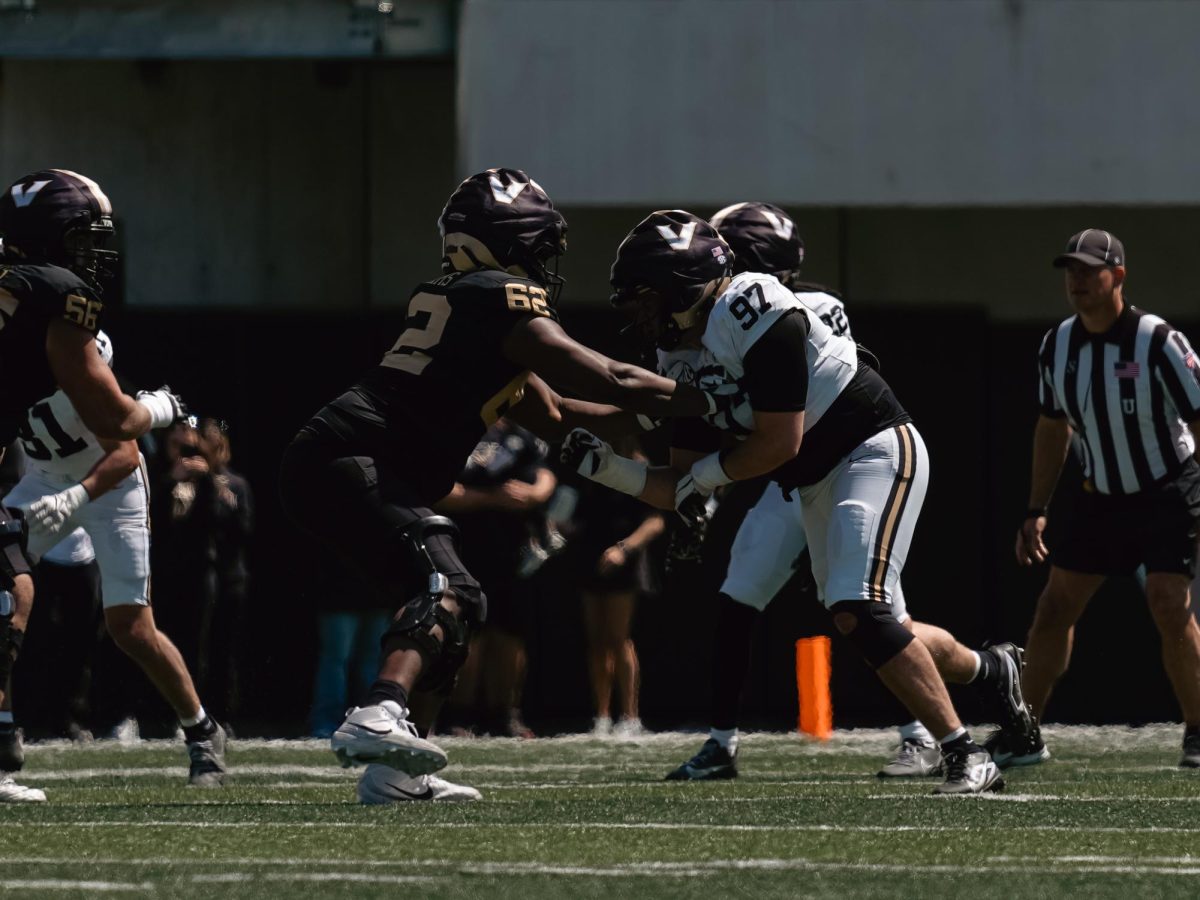Vanderbilt Football’s surge from the depths of the SEC has made it one of America’s sweethearts, with faith in the Commodores rising weekly. From the redemption of head coach Clark Lea to the underdog-turned-superstar Diego Pavia, all eyes have been on West End. One facet of this impressive rebuild, though, has gone underappreciated. That facet is offensive coordinator Tim Beck, the former New Mexico State play-caller whose offensive scheme has transformed the Commodores’ offense from monotonous to riveting.
Vanderbilt did not trail once over its last 120 minutes of play, encompassing two games against former No. 1 Alabama and Kentucky. This was largely due to the Commodores’ offense, which controlled the ball nearly 65% of the time across both contests. Through six games, Vanderbilt is the 28th highest-scoring offense in the nation, averaging 34.7 points per game. The Commodores are tied for ninth in red zone scoring percentage, 10th in third-down conversion rate and have only turned the ball over twice all season.
Last season, when Joey Lynch was Vanderbilt’s offensive coordinator, the Commodores’ offense ranked 104th in scoring at 20.6 points per game, was tied for 111th in red zone scoring and was 122nd in third-down conversion rate. While the change in talent on offense has done wonders for the Commodores, it doesn’t tell the full story. The new scheme under Beck is unique, efficient and reflective of the player’s attitude.
Charging ahead
Diverting from a traditional spread offense, this season’s Commodores have operated under a run-first spread option scheme. This system emphasizes a plethora of hard-hitting runs with 12 personnel, read options, run-pass options and play actions. Sprinkled in with these plays is a variety of pre-snap motions and trick plays that force defenders to play assignment-oriented football.
Beck’s offense thrives off creating leverage and opportunities for quick yards through the trenches. Thus far, 10 different Commodores have recorded a rushing attempt, with the team posting an average of 4 yards per carry and 165 rushing yards per game. In comparison, last season’s offense totaled only 95.3 rushing yards per game on 3.3 yards per carry.
What makes Vanderbilt’s run-first attack lethal is its smashmouth feel and ability to attack a defense with blistering force. Beck manipulates his blockers in a number of ways, generating momentum by calling pulls for his guards and tackles along with split zone blocks on the backside and downhill blocks for tight ends and fullbacks. These result in high-leverage, high-quality blocks that open up holes for easy gains while also wearing down opposing defenses as games go on.
Against Alabama and Kentucky, only 10 of Vanderbilt’s 91 attempted runs accounted for a loss of yardage. This is a result of the Commodores’ offensive line and additional blockers being able to move the line of scrimmage forward with ease. Additionally, the looming threat of a Pavia run freezes defenders at the point of handoffs, allowing the ball to get blasted through a gap. With so many blockers also dedicated to the point of attack, Sedrick Alexander — often ferocious and running at full speed — keeps defenders on their toes.
This churning offense has created positive situations routinely throughout every game, especially on third down. Currently, Vanderbilt is 41 for 80 on third-down conversions, a rate of 51.25%. The 2023 Commodores were 52 for 159 on third down, converting at a rate of just 32.70%. Vanderbilt has had no series end in a three-and-out across its last two contests and has punted the ball only four times. This methodical run game puts Vanderbilt in manageable down and distances, opening the door for both third-down efficiency and long, clock-draining drives.
Consistent looks, constant chaos
As mentioned before, Beck keeps defenses on their toes with an assortment of pre-snap motions and formations from a number of different players. He rarely utilizes the same player in these motions. Instead, he finds ways to have a variety of players shuffling throughout the field, which ultimately makes studying to play against Vanderbilt difficult.
Tight ends Eli Stowers and Cole Spence move back and forth before the snap as both blockers and potential pass catchers, but Stowers has also been on the move as a part of the triple option. Both sometimes also line up out wide before motioning back in to line up next to the offensive line. Wideouts like Richie Hoskins have done things similarly, lining up at wideout and then sprinting across the formation to flip the defense before coming back across in an orbital motion to set up the triple option. Fullback Gabe Fisher has also excelled, getting involved as a lead blocker out of the goalline I-formation and pistol formation.
Another simple beauty of Beck’s playcalling is that he never shies away from what works. Every play and formation alignment is meant to set up another play, whether it be within the same drive or a quarter or two down the line. For example, on the second play of the game against Alabama, the Commodores came out in a “twins wing” set (two “receivers” out wide, two tight ends on the opposite side of the formation) before motioning both tight ends across the formation and sending one back before then running a jet sweep to AJ Newberry for a first down. On the first play of the second quarter, Vanderbilt lined up in the same formation. That time, though, Newberry ran the same jet motion, and when Alabama’s defensive end shot up the field in response — expecting the same play — Pavia pulled the ball and rushed for a first down.
All guts, more glory
At first glance, Vanderbilt’s offense may appear, for lack of a better term, safe. The ball stays on the ground, high-percentage throws are encouraged and turnovers are infrequent. What escalates this offense into a consistent danger, though, is how dauntless Beck can be. Whether it be through trickery or a randomly-timed deep shot, Beck is willing to take risks to reap rewards.
A direct snap to a wildcat running back who hands it off to a quarterback for a fake reverse and pass to a flood concept? How about a tight end motioning in for an under-center sneak up the middle while the quarterback fakes a conversation with the sideline? Perhaps a quick snap on fourth-and-one with a receiver streaking down the middle of the field for a touchdown? Or maybe a triple-option shovel pass with a pulling guard leading the way? Vanderbilt’s scheme has it all, and it appears that its offense has a new trick up its sleeve every game.
Beck’s creativity, combined with his trust in his playmakers and general audacity, makes for a deadly combo. It’s difficult for coordinators to prepare defenders for their assignments while also remaining disciplined for every trick in the book. Not to mention that Beck’s strategy changes every week with new plays being installed seemingly on the fly.
Beck has coordinated and developed one of the most intriguing offenses in college football this year. Taking what people claim to be a roster of “lesser talent” compared to the rest of the SEC, Beck has flipped the script, allowing the Commodores to play physically and dominate tactically. Out of all the moves ingrained in this grand Vanderbilt rebuild, Beck’s hiring could (arguably) be the best of all. With such an eclectic style of play, it’s hard to put a ceiling on these Commodores. From here on out, Vanderbilt will be competitive in every game, with a hard-nosed, gritty and systematic offense leading the way.
Vanderbilt’s offense will look to continue its command as it takes on MAC member Ball State on Saturday, Oct. 19 at 6 p.m. CDT at FirstBank Stadium.











